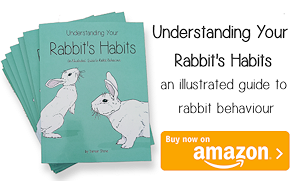How the Rabbit Digestive System Works
The initial stages of rabbit digestion are the same as most mammals. When a rabbit eats, the food travels from the mouth, down the oesophagus, into the stomach, and on to the small intestine. The small intestine is responsible for absorbing the nutrients from the food. As food travels along it, enzymes break the food down into individual nutrients that are small enough to pass through the lining of the intestine and be absorbed into the blood stream. Enzymes can't breakdown fibre, so in most mammals the fibre portion of the food would travel on through the colon and be excreted as waste. However, in rabbits the colon sorts the fibre into two types, digestible and indigestible.
Digestible fibre has nutrients locked away inside it, so the colon diverts it to the caecum for processing. The left over indigestible fibre doesn't contain any useable nutrients, but it is still essential to the digestive process, as it has helped carry the food through the digestive system. Its job is now complete, so the colon forms it into the hard round droppings your rabbit leaves in his litter tray and it passes out of the body as waste.
Meanwhile, in the caecum, a colony of special bacteria ferment the digestible fibre, breaking it down to release the stored nutrients. The caecum can absorb some of the nutrients but most need to go back through the small intestine to be absorbed. To achieve this, the fermented fibre moves back into the colon, where it is coated in protective mucus, before being excreted from the body as special droppings, called cecotropes or cecal droppings. The rabbit eats these droppings (a process called cacography) so they pass through the digestive tract again. In their new format, the small intestine can easily absorb the nutrients.

Why the right diet is important
Having such a specialised digestion system has drawbacks. Whilst it's very efficient at processing high fibre - low nutrient food like grass, the wrong types of food or sudden diet changes can easily disrupt it throwing the whole digestive system out of balance. For example:
- Too little bulky hay or grass to help food move along the gut slows it down and stops food travelling at the optimum speed for the digestive process to work.
- Too much carbohydrate or protein can send the gut into overdrive and produce sticky unformed droppings.















